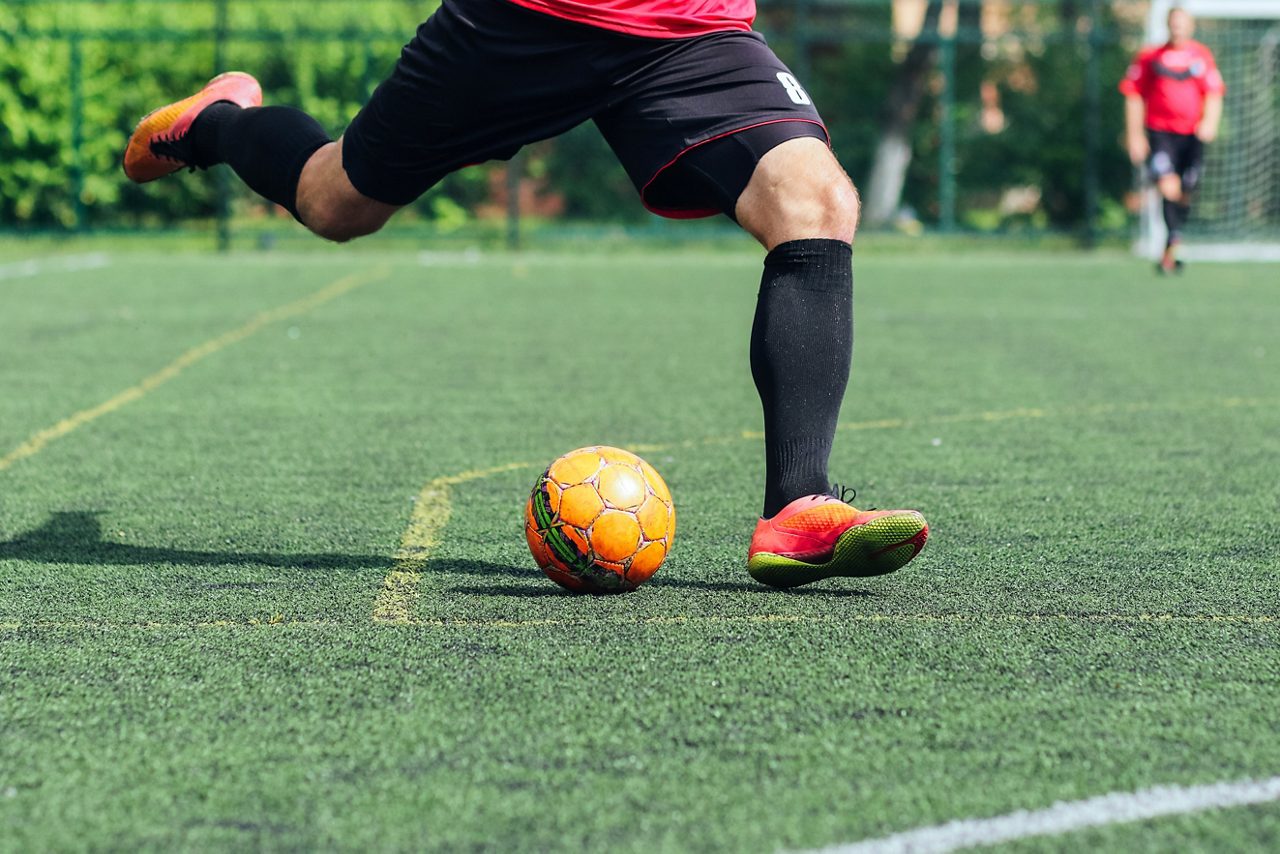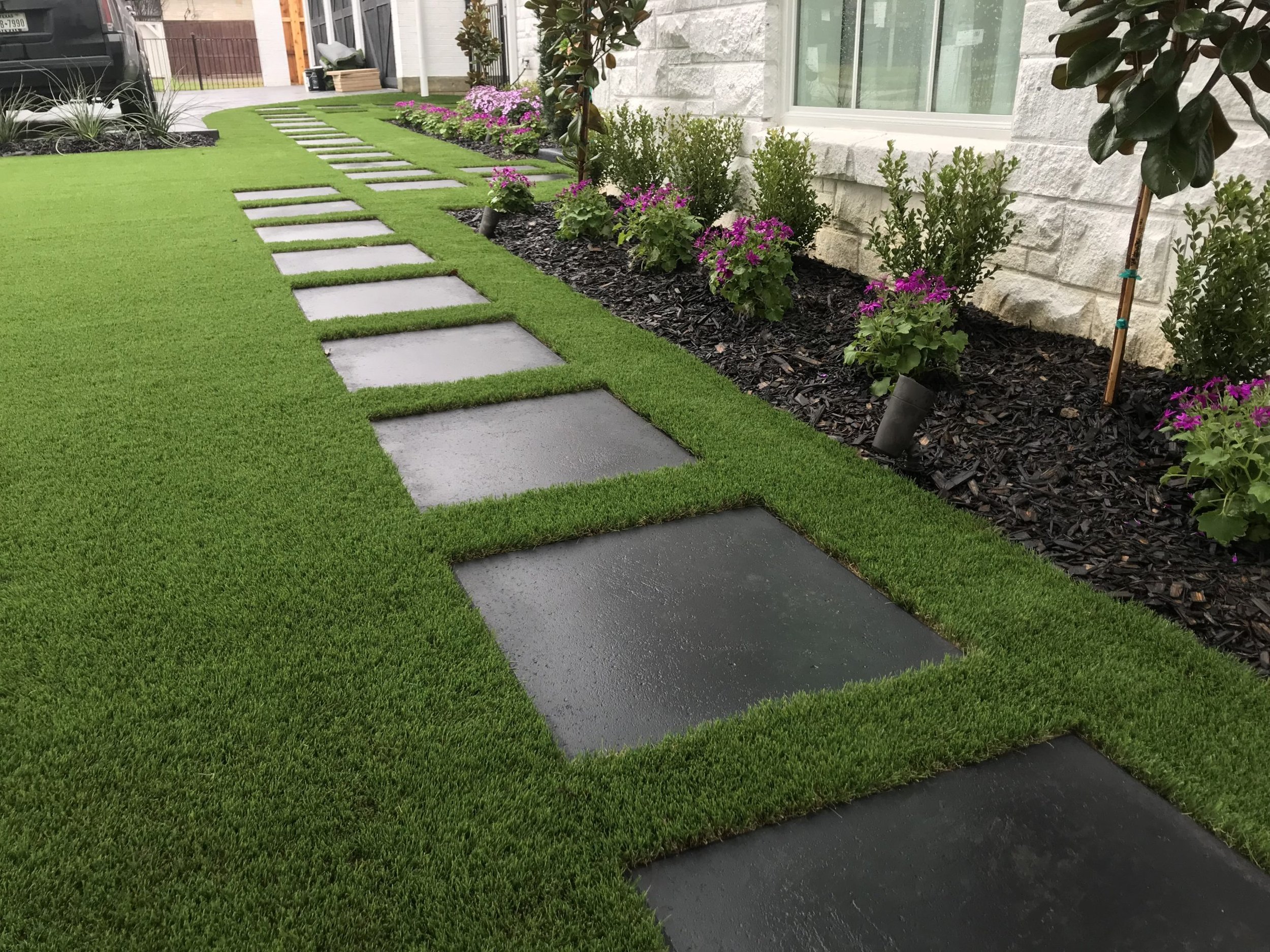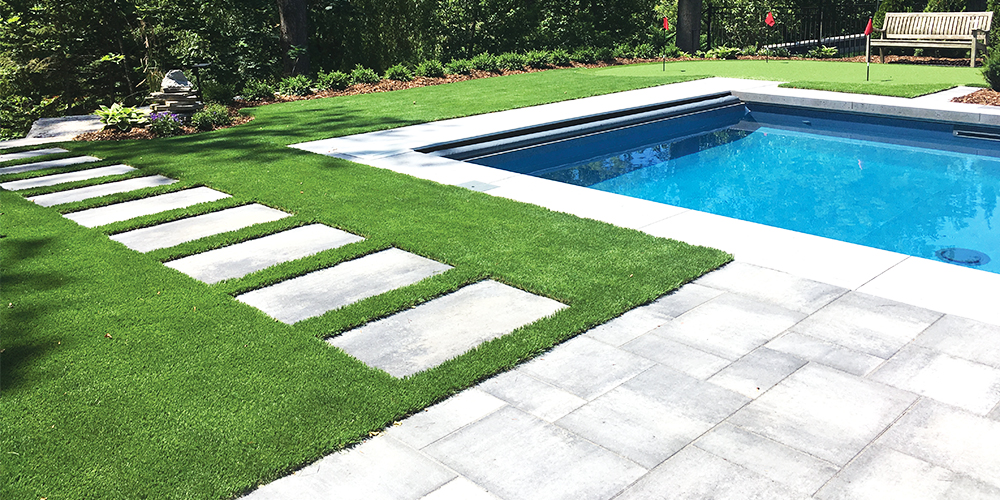Find the Top Artificial Turf Companies Phoenix for Your House or Commercial Space
Find the Top Artificial Turf Companies Phoenix for Your House or Commercial Space
Blog Article
Delve Into the Environmental Conveniences of Opting for Synthetic Grass Solutions
The fostering of fabricated turf services provides an engaging chance to resolve pressing environmental obstacles. By considerably lowering water use and decreasing the application of hazardous chemicals, these alternatives not just promote lasting landscape design but also safeguard local communities. The reduced carbon impact connected with reduced maintenance activities adds to a much more lasting method to land management. The ramifications of these benefits prolong past simple preservation initiatives, elevating inquiries concerning their lasting effect on habitat conservation and overall environmental equilibrium. Discovering these dimensions discloses an intricate interaction worth considering.
Water Conservation Benefits
One of the most substantial benefits of man-made grass is its capacity to preserve water. In contrast, man-made grass does not need watering, dramatically lowering the general demand for water sources.
By eliminating the requirement for regular watering, fabricated grass adds to sustainable landscape techniques and helps alleviate the ecological impact of excessive water intake. The conservation of water extends to the reduction of runoff, which can lead to soil disintegration and river contamination.
Additionally, the installation of synthetic grass enables home owners and towns to designate water resources a lot more efficiently, concentrating on necessary usages such as drinking water and farming. The change in the direction of synthetic grass not just advertises accountable water usage yet additionally aligns with broader environmental goals targeted at protecting natural deposits.
As areas progressively focus on sustainability, the water conservation benefits of artificial turf present an engaging situation for its fostering in commercial and domestic landscaping jobs.
Lowered Chemical Use
The transition to fabricated turf dramatically reduces the dependence on chemical therapies commonly made use of in all-natural turf upkeep. Traditional grass monitoring usually involves the application of pesticides, herbicides, and fertilizers to advertise growth and control insects. These chemicals can posture risks to human wellness, regional wild animals, and the environment, adding to dirt and water contamination.
On the other hand, man-made grass eliminates the demand for these hazardous materials. Once mounted, it requires marginal maintenance, primarily containing regular cleaning and occasional infill replenishment. This decrease in chemical use not only benefits the immediate setting yet also adds to wider environmental stability. By decreasing the release of synthetic compounds into the community, man-made lawn promotes healthier soil and water systems.
Additionally, the lack of chemical runoff connected with synthetic grass installations assists safeguard regional waterways from contamination, sustaining water life and keeping biodiversity. Turf installation phoenix az. As communities progressively focus on lasting practices, selecting artificial turf presents a feasible service that straightens with ecological preservation objectives. Via this change, property owners can take pleasure in lush green rooms without compromising ecological health and wellness, leading the method for a more sustainable future
Reduced Carbon Impact

Moreover, the installment of synthetic grass can lead to substantial water preservation. All-natural lawns require significant quantities of water for irrigation, which not just adds to the carbon impact connected with water extraction and treatment however likewise pressures neighborhood water sources. On the other hand, man-made lawn needs minimal upkeep, requiring no watering, thus substantially lowering water usage and its linked energy prices.
Furthermore, the long life of synthetic grass adds to its reduced carbon impact. With a life-span of approximately 15 years or even more, the need for frequent replacements is reduced, leading to much less waste and lower energy consumption in production and throwing away typical turf options. Overall, synthetic grass provides a sustainable alternative for environmentally conscious landscaping.
Habitat Conservation
Environment preservation is a vital consideration in the debate over landscape design selections, particularly when contrasting synthetic grass to all-natural yard. All-natural turf yards try these out commonly call for extensive maintenance, including using plant foods, chemicals, and herbicides, which can negatively affect regional environments. These chemicals can leach right into the soil and waterways, damaging indigenous plants and fauna and interrupting regional environments.
Man-made turf removes the demand for dangerous chemicals, therefore safeguarding nearby wildlife and keeping the honesty of surrounding environments. The setup of fabricated grass can lead to the conversion of former lawn areas into more biodiverse landscapes, such as pollinator gardens or native plant areas, which can sustain local wildlife.
Inevitably, the transition to artificial lawn not only conserves water and decreases maintenance initiatives but also fosters a more harmonious partnership in between human tasks and the natural surroundings, promoting habitat preservation in the process.
Long-Term Sustainability
Lasting sustainability is a critical aspect in examining the advantages of synthetic grass over conventional grass lawns. Among the most considerable advantages of synthetic grass is its durability; it can last as much as 15-20 years with marginal maintenance, whereas all-natural grass requires constant reseeding and substitute. This longevity minimizes the need for continuous resources, such as water, plant foods, and chemicals, which are vital for maintaining a healthy and balanced yard yard.
Additionally, synthetic grass adds to a reduction in carbon discharges connected with lawn care tools. Traditional yards typically need gas-powered mowers, leaners, and blowers, all of which add to air contamination. Phoenix turf companies. In contrast, synthetic grass eliminates the need for such equipment, advertising a cleaner setting
Additionally, the production of man-made lawn progressively utilizes recycled products, enhancing its sustainability profile. As suppliers embrace green techniques, the environmental footprint of fabricated lawn remains to decrease.

Final Thought
The fostering of synthetic grass services presents significant environmental advantages, including considerable water conservation, minimized reliance on dangerous chemicals, and a lower carbon footprint. Synthetic grass aids in protecting natural environments by minimizing land disturbance and advertising lasting sustainability with the use of durable materials. Collectively, these factors underscore the potential of synthetic grass to add positively browse around here to environmental health and offer a viable choice to conventional landscaping techniques in an increasingly resource-conscious world.
In comparison, synthetic turf does not require watering, considerably decreasing the general demand for water resources. By lessening the release of artificial substances into the environment, artificial lawn advertises healthier soil and water systems.
In addition, the installation of artificial grass can result in significant water preservation. In comparison, fabricated turf internet requires marginal upkeep, calling for no watering, therefore substantially lowering water usage and its linked energy costs.

Report this page